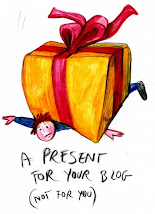
GANESH CHATURTHI
Ganesha Chaturthi is a day on which Lord Ganesha, the son of Shiva and Parvati, is believed to bestow his presence on earth for all his devotees. It is also known as Vinayaka Chaturthi.
Ganesh Chaturthi is celebrated as it is the birthday of Lord Ganesha.The day usually falls between 20 August and 15 September. The festival lasts for 10 days, ending on Anant Chaturdashi .
Ganesh Chaturthi is celebrated as it is the birthday of Lord Ganesha.The day usually falls between 20 August and 15 September. The festival lasts for 10 days, ending on Anant Chaturdashi .

Ganesha, the elephant-headed son of Shiva and Parvati, is widely worshipped as the supreme god of wisdom, prosperity and good fortune.
While Vinayaka Chaturthi is celebrated all over India, it is most elaborate in Maharashtra, Goa (biggest festival for Konkani people all over the world), Gujarat, Karnataka, Tamil Nadu and Andhra Pradesh, and other areas which were former states of the Maratha Empire.Outside India, it is celebrated widely in Nepal which was only Hindu Kingdom in the world and Tamil Hindus in Sri Lanka.
The origin of the festival lies in the Holy Hindu scriptures which tell the story of Lord Ganesha.

According to the legend, Lord Shiva, the Hindu God of resolution, was away at a war. His wife Parvati, wanted to bathe and having no-one to guard the door to her house, conceived of the idea of creating a son who could guard her. Parvati created Ganesha out of the sandalwood paste that she used for her bath and breathed life into the figure. She then set him to stand guard at her door and instructed him not to let anyone enter.

In the meantime, Lord Shiva returned from the battle but as Ganesha did not know him, stopped Shiva from entering Parvati's chamber. Shiva, enraged by Ganesh’s impudence, drew his trident and cut off Ganesha's head. Parvati emerged to find Ganesha decapitated and flew into a rage. She took on the form of the Goddess Kali and threatened destruction to the three worlds of Heaven, Earth and the subterranean earth.
Parvati was still in a dangerous mood. Seeing her in this mood, the other Gods were afraid and Shiva, in an attempt to pacify Parvati, sent out his ganas, or hordes, to find a child whose mother is facing another direction in negligence, cut off his head and bring it quickly. The first living thing they came across was an elephant. That elephant was facing north (the auspicious direction associated with wisdom). So they brought the head of this elephant and Shiva placed it on the trunk of Parvati's son and breathed life into him. Parvati was overjoyed and embraced her son, the elephant-headed boy whom Shiva named Ganesha, the lord of his ganas. Parvati was still upset so Lord Shiva announced that everyone who worships Ganesha before any other form of God is favoured. So Ganesh is worshipped first in all Hindu occasions and festivals.
 Ganesha — the elephant-deity riding a mouse — has become one of the commonest mnemonics for anything associated with Hinduism. This not only suggests the importance of Ganesha, but also shows how popular and pervasive this deity is in the minds of the masses.
Ganesha — the elephant-deity riding a mouse — has become one of the commonest mnemonics for anything associated with Hinduism. This not only suggests the importance of Ganesha, but also shows how popular and pervasive this deity is in the minds of the masses.
The son of Shiva and Parvati, Ganesha has an elephantine countenance with a curved trunk and big ears, and a huge pot-bellied body of a human being.He is the Lord of success and destroyer of evils and obstacles. He is also worshipped as the god of education, knowledge, wisdom and wealth. In fact, Ganesha is one of the five prime Hindu deities (Brahma, Vishnu, Shiva and Durga being the other four) whose idolatry is glorified as the panchayatana puja.
 The devotees of Ganesha are known as 'Ganapatyas', and the festival to celebrate and glorify him is called Ganesh Chaturthi. Ganesha's head symbolizes the Atman or the soul, which is the ultimate supreme reality of human existence, and his human body signifies Maya or the earthly existence of human beings. The elephant head denotes wisdom and its trunk represents Om, the sound symbol of cosmic reality. In his upper right hand Ganesha holds a goad, which helps him propel mankind forward on the eternal path and remove obstacles from the way. The noose in Ganesha's left hand is a gentle implement to capture all difficulties.
The devotees of Ganesha are known as 'Ganapatyas', and the festival to celebrate and glorify him is called Ganesh Chaturthi. Ganesha's head symbolizes the Atman or the soul, which is the ultimate supreme reality of human existence, and his human body signifies Maya or the earthly existence of human beings. The elephant head denotes wisdom and its trunk represents Om, the sound symbol of cosmic reality. In his upper right hand Ganesha holds a goad, which helps him propel mankind forward on the eternal path and remove obstacles from the way. The noose in Ganesha's left hand is a gentle implement to capture all difficulties.
The broken tusk that Ganesha holds like a pen in his lower right hand is a symbol of sacrifice, which he broke for writing the Mahabharata. The rosary in his other hand suggests that the pursuit of knowledge should be continuous.

The laddoo (sweet) he holds in his trunk indicates that one must discover the sweetness of the Atman. His fan-like ears convey that he is all ears to our petition. The snake that runs round his waist represents energy in all forms and he is humble enough to ride the lowest of creatures, a mouse.
Ganesha is also the destroyer of vanity, selfishness and pride. He is the personification of material universe in all its various magnificent manifestations. All Hindus worship Ganesha regardless of their sectarian belief. He is both the beginning of the religion and the meeting ground for all Hindus.


While Vinayaka Chaturthi is celebrated all over India, it is most elaborate in Maharashtra, Goa (biggest festival for Konkani people all over the world), Gujarat, Karnataka, Tamil Nadu and Andhra Pradesh, and other areas which were former states of the Maratha Empire.Outside India, it is celebrated widely in Nepal which was only Hindu Kingdom in the world and Tamil Hindus in Sri Lanka.
The origin of the festival lies in the Holy Hindu scriptures which tell the story of Lord Ganesha.

According to the legend, Lord Shiva, the Hindu God of resolution, was away at a war. His wife Parvati, wanted to bathe and having no-one to guard the door to her house, conceived of the idea of creating a son who could guard her. Parvati created Ganesha out of the sandalwood paste that she used for her bath and breathed life into the figure. She then set him to stand guard at her door and instructed him not to let anyone enter.

In the meantime, Lord Shiva returned from the battle but as Ganesha did not know him, stopped Shiva from entering Parvati's chamber. Shiva, enraged by Ganesh’s impudence, drew his trident and cut off Ganesha's head. Parvati emerged to find Ganesha decapitated and flew into a rage. She took on the form of the Goddess Kali and threatened destruction to the three worlds of Heaven, Earth and the subterranean earth.
Parvati was still in a dangerous mood. Seeing her in this mood, the other Gods were afraid and Shiva, in an attempt to pacify Parvati, sent out his ganas, or hordes, to find a child whose mother is facing another direction in negligence, cut off his head and bring it quickly. The first living thing they came across was an elephant. That elephant was facing north (the auspicious direction associated with wisdom). So they brought the head of this elephant and Shiva placed it on the trunk of Parvati's son and breathed life into him. Parvati was overjoyed and embraced her son, the elephant-headed boy whom Shiva named Ganesha, the lord of his ganas. Parvati was still upset so Lord Shiva announced that everyone who worships Ganesha before any other form of God is favoured. So Ganesh is worshipped first in all Hindu occasions and festivals.
 Ganesha — the elephant-deity riding a mouse — has become one of the commonest mnemonics for anything associated with Hinduism. This not only suggests the importance of Ganesha, but also shows how popular and pervasive this deity is in the minds of the masses.
Ganesha — the elephant-deity riding a mouse — has become one of the commonest mnemonics for anything associated with Hinduism. This not only suggests the importance of Ganesha, but also shows how popular and pervasive this deity is in the minds of the masses. The son of Shiva and Parvati, Ganesha has an elephantine countenance with a curved trunk and big ears, and a huge pot-bellied body of a human being.He is the Lord of success and destroyer of evils and obstacles. He is also worshipped as the god of education, knowledge, wisdom and wealth. In fact, Ganesha is one of the five prime Hindu deities (Brahma, Vishnu, Shiva and Durga being the other four) whose idolatry is glorified as the panchayatana puja.
 The devotees of Ganesha are known as 'Ganapatyas', and the festival to celebrate and glorify him is called Ganesh Chaturthi. Ganesha's head symbolizes the Atman or the soul, which is the ultimate supreme reality of human existence, and his human body signifies Maya or the earthly existence of human beings. The elephant head denotes wisdom and its trunk represents Om, the sound symbol of cosmic reality. In his upper right hand Ganesha holds a goad, which helps him propel mankind forward on the eternal path and remove obstacles from the way. The noose in Ganesha's left hand is a gentle implement to capture all difficulties.
The devotees of Ganesha are known as 'Ganapatyas', and the festival to celebrate and glorify him is called Ganesh Chaturthi. Ganesha's head symbolizes the Atman or the soul, which is the ultimate supreme reality of human existence, and his human body signifies Maya or the earthly existence of human beings. The elephant head denotes wisdom and its trunk represents Om, the sound symbol of cosmic reality. In his upper right hand Ganesha holds a goad, which helps him propel mankind forward on the eternal path and remove obstacles from the way. The noose in Ganesha's left hand is a gentle implement to capture all difficulties. The broken tusk that Ganesha holds like a pen in his lower right hand is a symbol of sacrifice, which he broke for writing the Mahabharata. The rosary in his other hand suggests that the pursuit of knowledge should be continuous.

The laddoo (sweet) he holds in his trunk indicates that one must discover the sweetness of the Atman. His fan-like ears convey that he is all ears to our petition. The snake that runs round his waist represents energy in all forms and he is humble enough to ride the lowest of creatures, a mouse.
Ganesha is also the destroyer of vanity, selfishness and pride. He is the personification of material universe in all its various magnificent manifestations. All Hindus worship Ganesha regardless of their sectarian belief. He is both the beginning of the religion and the meeting ground for all Hindus.








16 comments:
very nice. bahut aakarshak hai.
Aapko ganesh chaturthi kee bahut-bashut shubhkamnaayen.
great. Ganesh is my favorite god. There is something very charming and attractive in his stories and personality.Thanks for sharing. :)
very informative and clean article!
That's again a very informative post. India has so many colourful festivals. You seem like a person who knows a lot about festivals!
Keep the posts coming..:)
Happy ganesh chaturthi!!!
Nice post...i loved that description of the Ganesha's image!!!
hey how u got the image of ganesha on the cursor....plz tell me!!!
Brilliant post, simply too good. The myth of ganesha i knew, but the symbolism of each part. and especially the modaks was an eye-opener!
Happy Ganeshotsav to you and your family!
Babli,Happy Ganesh Chaturthi.
You have written so much in details that which I never knew.
Love the symbolism explanation! A copy of that posted all over will give people more to think about!!
also love the headeron the blog. very beautiful!!
Although I am an agnostic, nevertheless I like this article as an ancient apocryphal story which
somehow connects us with our consciousness with our traditional values.
cheers!!!
This legend story is same as the animation movie bal ganesh I watched sometimes back. I never know the names and details of the things ganesh holds in his hands. Well written and it was nice reading babli!
Nice post on Ganeshji
Very nicely done. This is my favorite festival.
This is so interesting, I enjoyed reading it very much and the pictures were nice. Thank you for coming by and commenting.
great post..thanks for sharing..take care..best wishes always friend..
enjoy your article. thanks for share.
aR
Bangla Hacks
One of the pictures of lord ganesh (the first one) is of Dagadusheth ganesh from Pune!
Very nice informative post!
Post a Comment